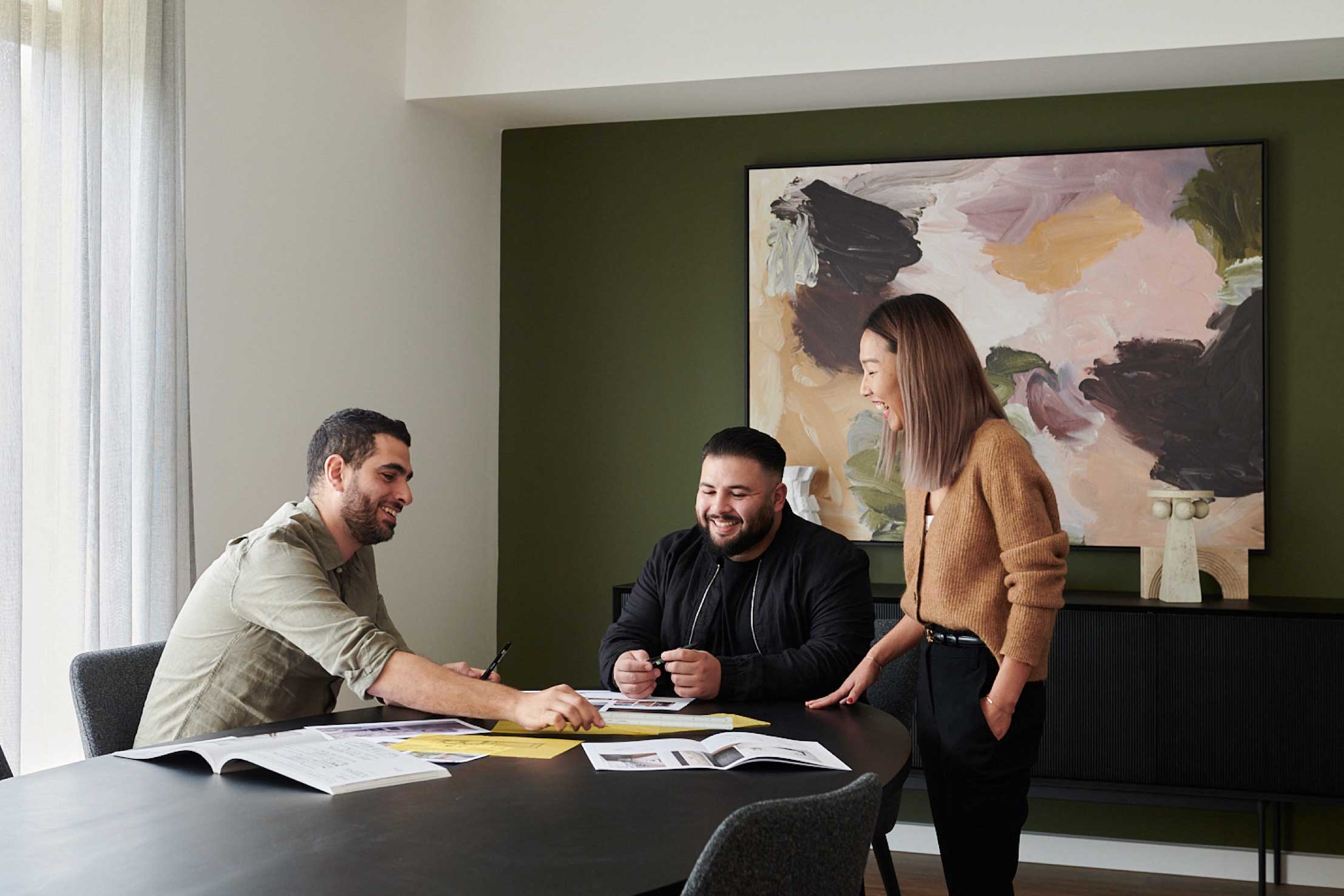Unveiling 5 key conversations at your design appointment

Bringing your ideas, colour choices and home aesthetic to life can be both daunting and delightful, but as leaders in the custom design and building industry, we know exactly how to make it a seamless experience for our clients.
Picking the brains of our four lead designers, we’ve uncovered their top priorities when it comes to the initial appointment, breaking down their key focus areas to give you a glimpse into the foundational steps of the design process.

01 The Block: Opportunities & Challenges
Every site has its unique constraints and advantages, whether it’s the location, topography, or existing vegetation, and as Carter Grange Designer, Arsen Baglayenko believes ‘every block is a great block for us’.
‘Understanding the block’s foundational elements can help us exploit the positives, turning potential challenges into design opportunities. By examining factors such as the orientation of the land and how these aspects can influence the home’s design, we can create a tailored solution that maximises the block’s potential.’

02 Understanding our client’s lifestyle & tailoring a floorplan
A successful design begins with understanding who will be living in the space. Carter Granger’s Design Manager, John Bonnaci often starts the conversation by asking, ‘Tell me all about you and your family’. This insight is invaluable in shaping the design process.
‘Another follow-up question I often find helpful is, ‘Are you building a long-term family home or a property to sell?’ Knowing our client’s lifestyle, habits, and future plans will guide us in crafting a floorplan that not only meets their current needs but also adapts to the evolving family dynamics over the next 5, 10, or even 15 years.
03 Defining Your Design Aesthetic
Design is not just about functionality; it’s also about style. During the initial design appointment, we explore our client’s design preferences by discussing their aesthetic vision.
Carter Grange Designer, Ben Tranter will often ask his clients to bring in interior/exterior imagery that they like or dislike, believing ‘it’s often easier for client’s to explain why they do or don’t like something from an image, rather than asking them to articulate it.’ Additionally, it’s important to identify any special features or materials that resonate with the client, ensuring that the final design reflects their personal style.

04 Crafting your home’s façade
The façade of your home plays a pivotal role in making a lasting first impression. Carter Grange Designer, Mimi Choi believes it important to ask clients ‘would you prefer a design that blends seamlessly with the neighbourhood or one that stands out?’ This often ties into an exploration of ‘standard facade options or custom designs that resonate with our client’s vision.’
Secondly, understanding the history and character of the neighbourhood can greatly influence design choices. If clients have lived in the area for some time, their insights can be incredibly valuable. ‘We’ll discuss how your new home can fit into the existing streetscape while also making a statement.’
05 The Final Outcome
We found collaborating throughout our Design phase to be the most rewarding aspect of designing our new home.
Working closely with John on the constraints of our land and what was important to us in terms of space, functionality and family needs has certainly produced an impressive and unique design outcome.
It was also rewarding to realise firsthand just how talented John is in bringing our ideas to life.
We continue to fall in love with our home every time we walk through the front door’
Client: Michael


